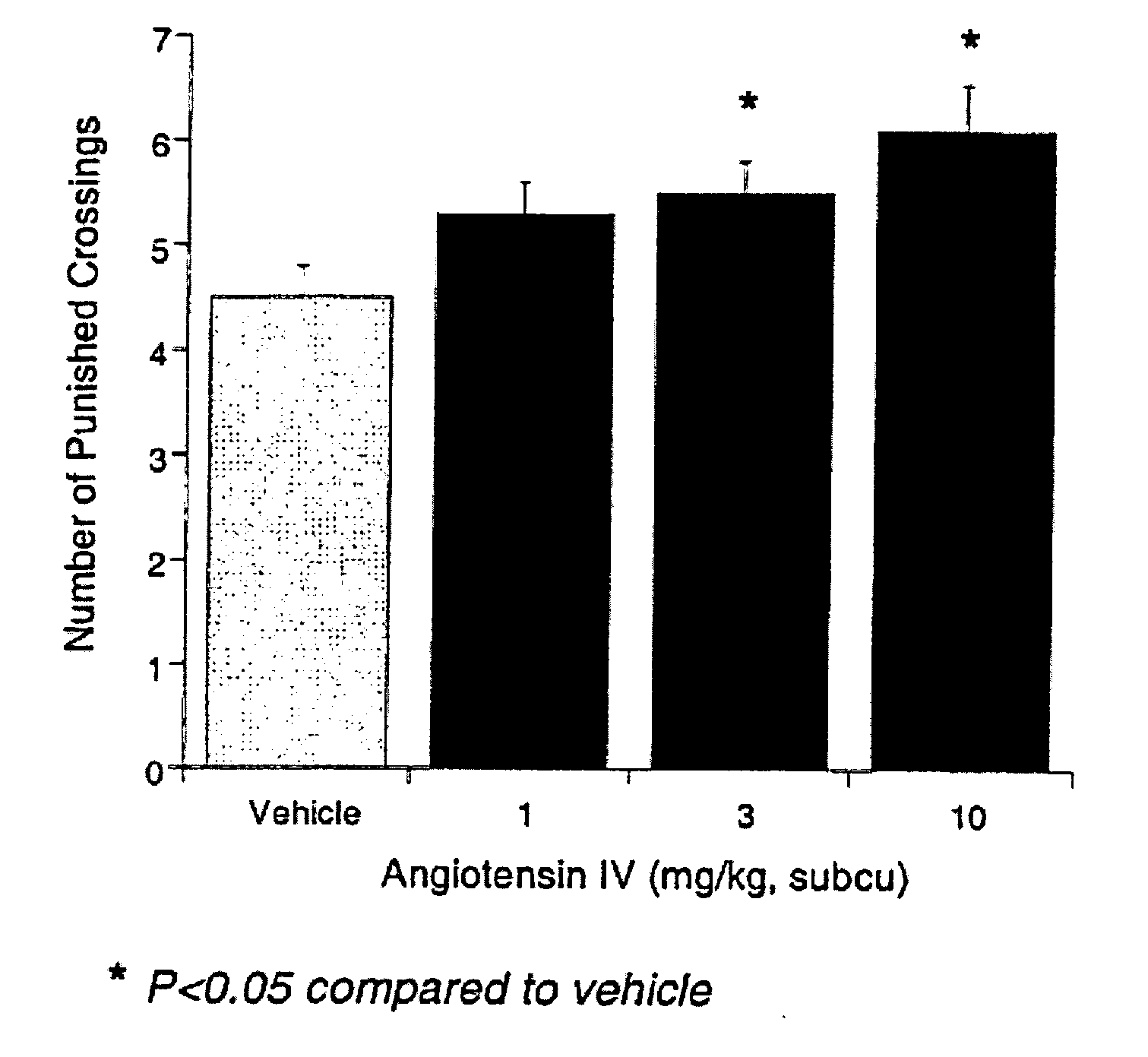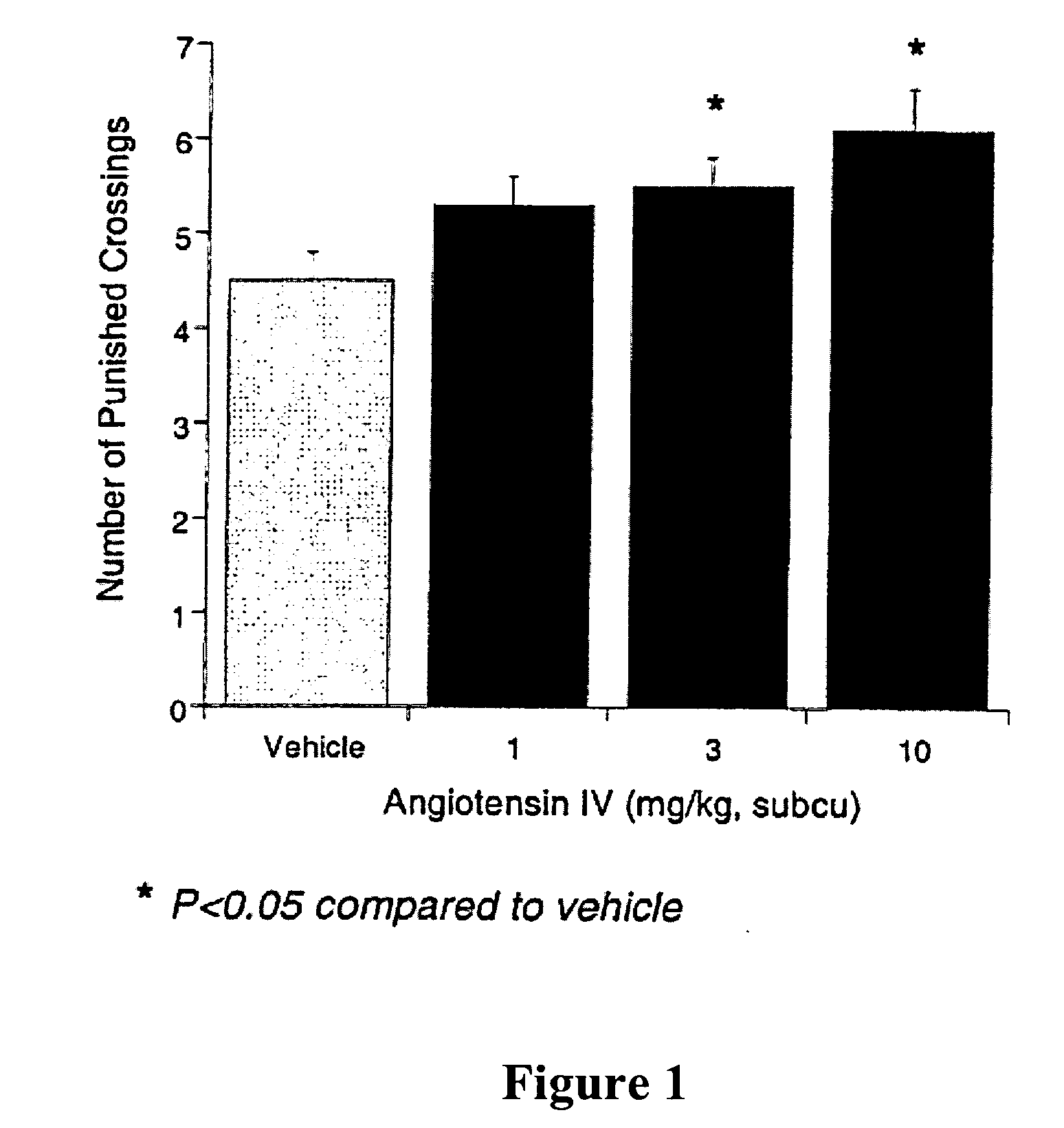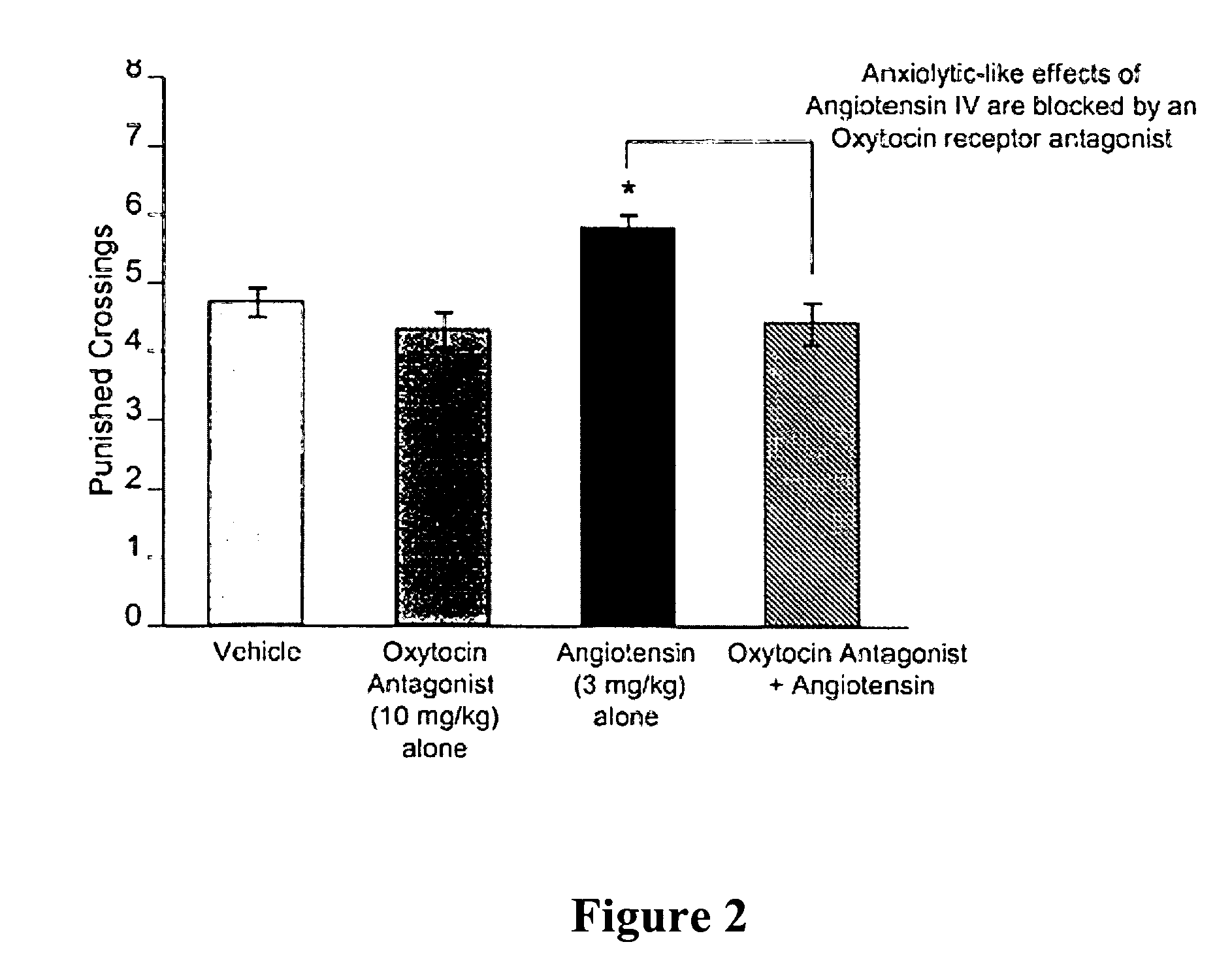Methods for the treatment of anxiety and for identification of anxiolytic agents
a technology of anxiolytic agents and methods, applied in the field of neuropsychiatry, can solve the problems that there has been no relationship between at4r activity and neuropsychiatric conditions, and achieve the effects of reducing anxiety, reducing anxiety in a subject, and reducing anxiety
- Summary
- Abstract
- Description
- Claims
- Application Information
AI Technical Summary
Benefits of technology
Problems solved by technology
Method used
Image
Examples
example 1
Effect of AT4 Receptor Blockade on Anxiety Behavior in Mouse 4-Plate Model
[0069] The effects of AT4 receptor blockade by AT4 were investigated in the mouse 4-plate model of anxiety.
[0070] Male Swiss Webster mice weighing 18-24 g were used in the 4 plate studies. Animals were housed in groups of 15 in an AAALAC-accredited facility (Wyeth Research, Princeton, N.J.) with food and water available ad libitum. Animals were maintained on a 12-hour light / dark cycle (lights on at 0600) with all studies performed during the light phase. On the day of experiments, mice were injected with AT4 (0, 1, 3 and 10 mg / kg) 30 minutes before the start of the study. Initially, mice were individually placed in a plexiglass cage (18×25×16 cm) with a floor consisting of four rectangular metal plates (8×11 cm), which are wired to a shock generator (Med Associates). In each experiment, mice were placed into the chamber and given an 18-sec habituation period, which was followed by a 1-min test session. After...
example 2
Reversal of Anxiolytic-Like Effects of AT4 by an Antagonist of Oxytocin
[0072] To determine whether the anxiolytic-like effects of AT4 Receptor Blockade were mediated, at least in part, by oxytocin, the procedures set forth in Example 1 were repeated in the presence of a known oxytocin receptor antagonist, WAY-162720.
[0073] For these studies, the same 4-plate procedures were used as described in Example 1, above. The only difference was that animals were injected with 10 mg / kg of the oxytocin receptor antagonist, WAY-162720. This injection was given at the same time as AT4 (3 mg / kg) which was administered 30 minutes before mice were placed in the 4-plate cage. After the 18 sec habituation period, an electric shock (0.8 mA) was delivered for 3.0 sec when mice crossed from one plate to another. A 3-sec time followed the delivery of each shock and a computer recorded the number of punished crossings during a 1-min test period. The mean number of punished crossings for each group was e...
example 3
Effect of AT4 Receptor Blockade on Oxytocin Levels in Rat Amygdala
[0075] In vitro, AT4 inhibits the peptidase activity of the AT4 receptor, leading to increases in levels of several peptides including oxytocin. To confirm this observation in vivo, microdialysis coupled to immunoassay techniques were used to monitor basal and AT4-induced changes in extracellular levels of oxytocin in the rat amygdala.
[0076] For microdialysis protocols, male Sprague-Dawley rats, weighing between 280 and 350 g, were group housed in an AAALC-accredited facility and maintained on a 12 hr light / dark cycle. All procedures were conducted during the light period (lights on at 0600 h). Using 2-3% halothane (Fluothane; Zeneca, Cheshire, UK) anesthesia, animals were secured in a stereotaxic frame with ear and incisor bars (David Kopf, Tujunga, Calif.). A microdialysis guide cannula (CMA / 12; CMA Microdialysis, Stockholm, Sweden) was directed toward the rat amygdala using the following coordinates: A / P—2.7 mm M...
PUM
| Property | Measurement | Unit |
|---|---|---|
| length | aaaaa | aaaaa |
| length | aaaaa | aaaaa |
| flow rate | aaaaa | aaaaa |
Abstract
Description
Claims
Application Information
 Login to View More
Login to View More - R&D
- Intellectual Property
- Life Sciences
- Materials
- Tech Scout
- Unparalleled Data Quality
- Higher Quality Content
- 60% Fewer Hallucinations
Browse by: Latest US Patents, China's latest patents, Technical Efficacy Thesaurus, Application Domain, Technology Topic, Popular Technical Reports.
© 2025 PatSnap. All rights reserved.Legal|Privacy policy|Modern Slavery Act Transparency Statement|Sitemap|About US| Contact US: help@patsnap.com



